The Long History of Llangollen
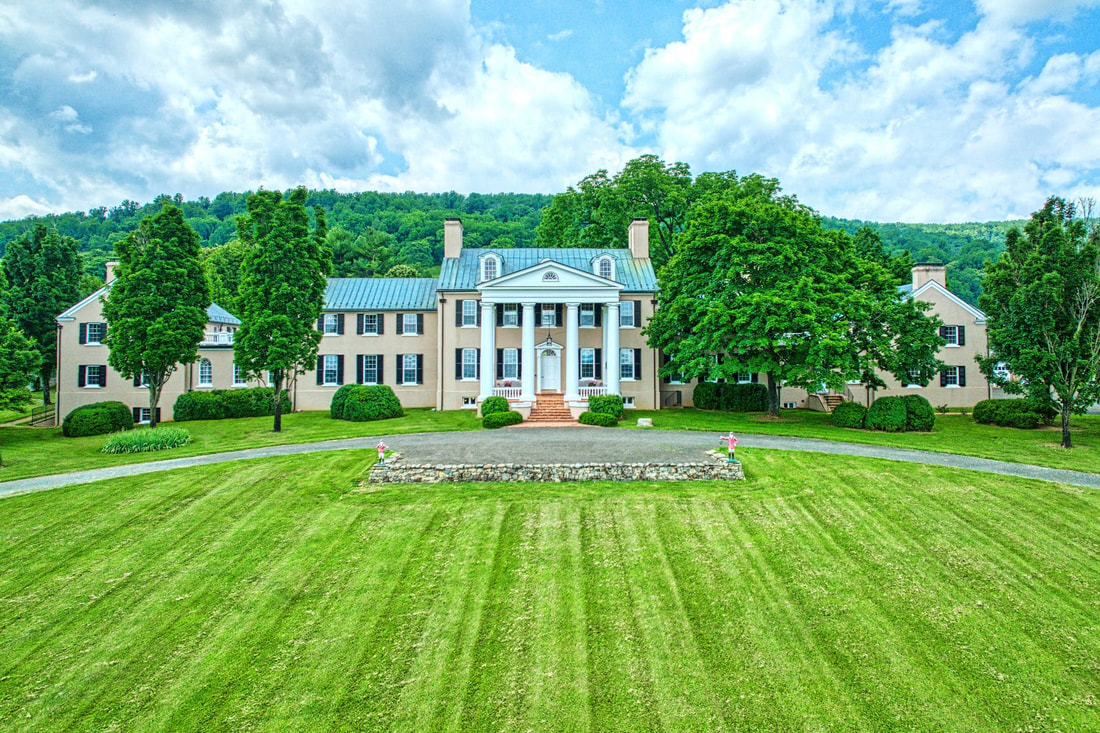
Written by Heidi Baumstark | Photos by Roman Caprano/Sky Blue Media.
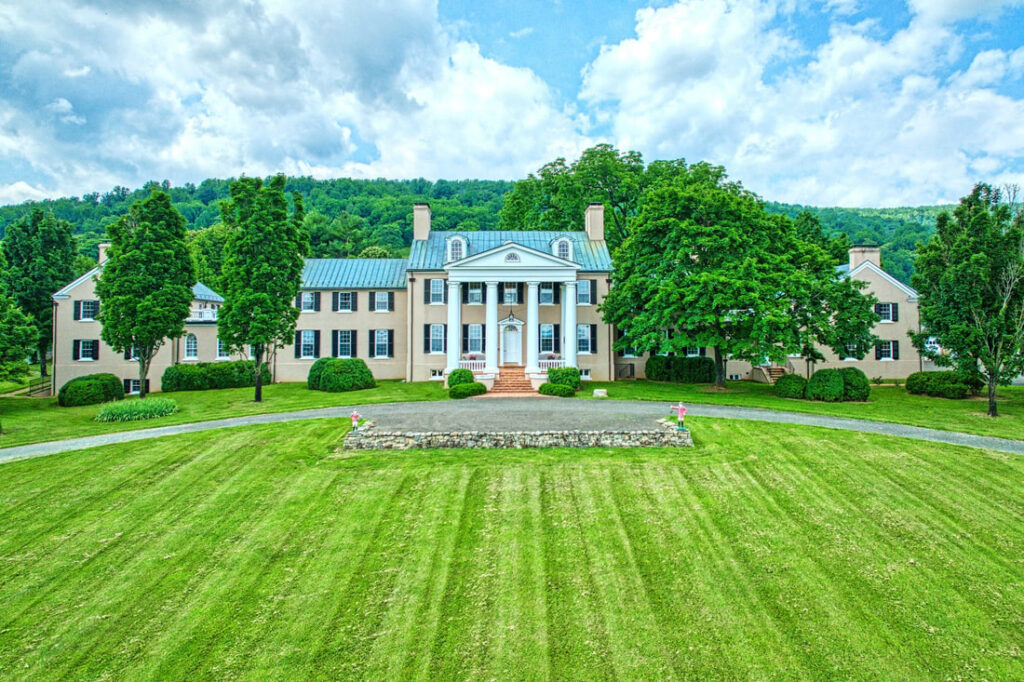
In the heart of Virginia’s Hunt Country sits Llangollen, an equestrian estate with 18th-century roots and luxurious 21st-century amenities. Its 1,100 pristine acres are located in western Loudoun County (with four of those acres in Clarke County) at the foot of the Blue Ridge Mountains.
The name Llangollen originates from a small town near the River Dee in Denbighshire, North Wales, in the U.K. It takes its name from the Welsh word llan meaning “church” or “religious settlement,” and the monk Saint Collen — the traditional founder of the sixth-century town.
Just eight miles from Middleburg, Llangollen was originally part of a 10,000-acre land grant. The house’s oldest section is the patent house, built in 1795, which has since been incorporated into the 1830s manor house. Over the centuries, the estate has received extensive additions and renovations. In 2017, the property was listed on the National Register of Historic Places and has been forever preserved under a conservation easement through the Virginia Outdoors Foundation.
Since it was first erected in 1795, the main house has undergone four major building campaigns (circa 1830, 1918, 1930, and 1989), significantly expanding the footprint to a whopping 12,500 square feet consisting of nine bedrooms, 11 baths and 17 fireplaces, four of which are in the primary suite. The massive acreage includes a mile-long driveway, three polo fields, an arena, a unique horseshoe-shaped barn with capacity for meeting space, and nine tenant houses.
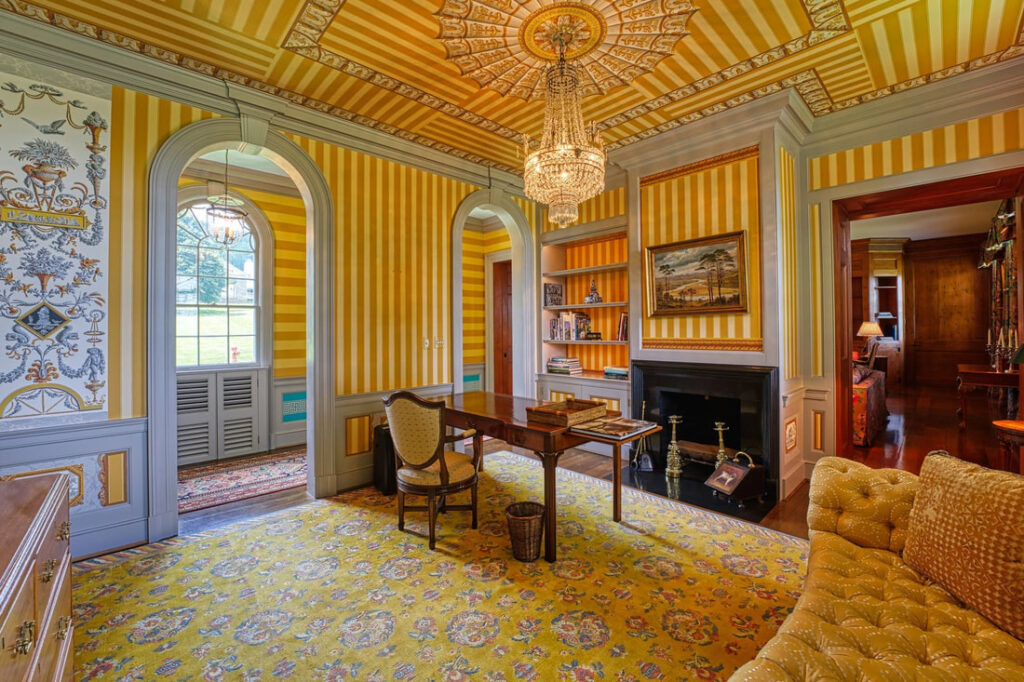
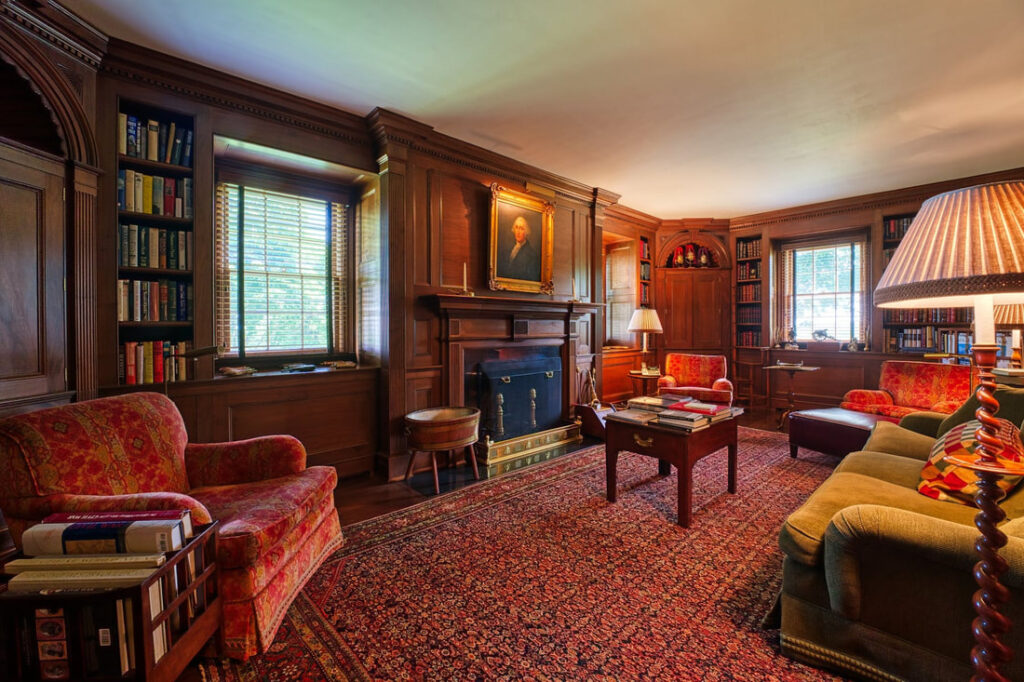
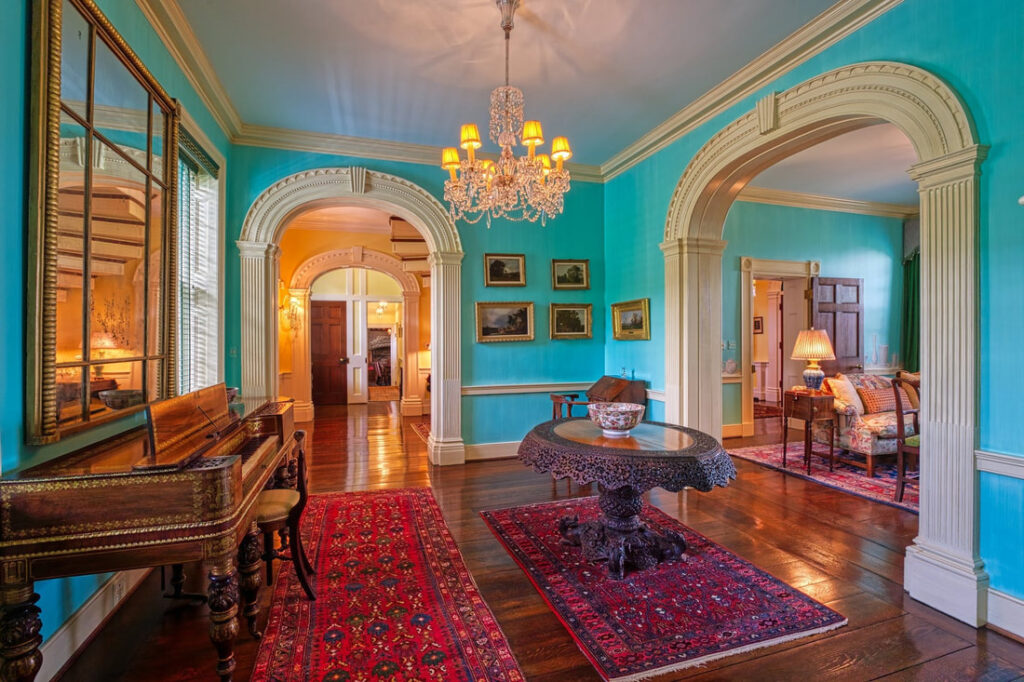
The 1700s
In 1763, three decades prior to establishing Llangollen, Leven Powell purchased property in Colonial Virginia which would become the town of Middleburg. Powell made his fortune through tenant farmers and enslaved workers who farmed at Llangollen by transporting agricultural products to Alexandria’s international shipping port, and by trading imported goods into Loudoun.
According to the 2017 National Register of Historic Places report, Llangollen was established on Virginia’s Native American frontier during the Colonial era when Powell, who served in the Revolutionary War, received title to the land from Lord Fairfax.
The primary historical structure is the two-and-a-half-story brick dwelling with stucco exterior, originally constructed in 1795 as a 16-by-20-foot patent house constructed to establish title to the land. Records indicated that Powell built the structure and began farming on the property following the Fairfax prescriptions of leasehold, which mandated not only the construction of a dwelling, but also planting of “an orchard of one hundred apple trees … well tended and walled,” according to an excerpt from the 2017 NRHP report.
The 1800s
When Powell died in 1810, one of his sons, Cuthbert Powell — a Virginia lawyer, merchant, and politician — inherited Llangollen and turned his attention and investment into farming. He and his wife, Catharine Simms Powell, and their children moved from Alexandria to Llangollen in 1813.
During the antebellum period, the Powells raised crops with an enslaved labor force and participated in the merchant economy tied to Alexandria. Many speculate that Thomas Jefferson stayed at Llangollen, though this has not been confirmed. “But, it is believed that Lafayette stayed there in 1825 [during his 1824-1825 American tour],” shares Peter Leonard-Morgan, a local realtor with Hunt Country Sotheby’s International Realty Middleburg.
The 1830s and 1840s were prosperous times at Llangollen for Cuthbert and his family. It is likely that during this period, Cuthbert built the house’s Federal-style center block adjacent to the modest patent house. This type of construction revealed the Powells’ status and wealth.
In 1849, at the age of 74, Cuthbert died at Llangollen and was buried in the family cemetery on the property.
In September 2022, the Virginia Piedmont Heritage Area Association held a program in the large horseshoe barn at Llangollen entitled “Llangollen and a Newly Discovered Loudoun Civil War Diary.” The presentation was led by Alison Herring, an independent researcher from Richmond.
Herring’s research indicates that about 20 to 30 enslaved people were working at Llangollen at any given time during Cuthbert’s ownership (1813-1849). The decade before the Civil War was an uncertain time for Llangollen as the property had been sold to various owners. In 1852, Catharine wrote in a letter to her daughter, “Llangollen is deteriorating.” It was sold in the early 1850s on the heels of Cuthbert’s death.
Near Llangollen, Civil War cavalry battles broke out in June 1863 up and down Route 50, and the Battle of Upperville (June 21, 1863), was fought at Goose Creek Bridge. Mosby’s Rangers were active in the countryside. “Folklore says John Mosby and his hooligans gathered at Llangollen,” Leonard-Morgan adds.
The Early 1900s
In the early 20th century, Loudoun’s economy began to revive. Land prices stabilized, and Middleburg was blossoming into “Hunt Country” due to increased popularity of equestrian sports, with New Yorkers migrating to Virginia’s milder climate for longer foxhunting seasons.
By 1930, the estate was purchased by millionaire John Hay “Jock” Whitney for his fiancée, Mary Elizabeth “Liz” Altemus, as a wedding gift. The Whitneys had a passion for foxhunting and racing. Polo became popular at the property too, which led to the construction of multiple barns, tack rooms, paddocks, a training track, employee and guest cottages, and other buildings to support this large equestrian mecca. During the Whitneys’ ownership, the house was transformed into a Colonial revival-style manor house.
The Whitneys divorced in 1940 but Liz continued to live there, turning Llangollen into a major breeding and training center for foxhunting horses as well as for Thoroughbreds for racing and steeplechase events. She remained there until her death at age 82 in 1988.
With the Whitneys came a changing view toward rural life. No longer tied to an agricultural-based economy, the rural landscape at Llangollen was enjoyed for its qualities of society and leisure. Llangollen became a magnet of Middleburg’s social, foxhunting, polo, and steeplechase scene.
The 1980s – Early 2000s
In 1989, the farm was sold to Roy L. Ash and his wife, Lila. The Ash family invested millions building two additions on either end of the house and restoring the barns.
In 2007, Ash sold the property to Donald and Patricia Brennan. Leonard-Morgan adds, “When Mr. Brennan bought it, they poured more into it. It just captured his heart.” The Brennans took great pride, continuing the traditions of world-class equestrian pursuits. Their daughter, Maureen — a former Grand Prix rider — played competitive polo, filling the fields once again with horses, and formed the Virginia International Polo Club training facility at Llangollen. On special occasions, the Brennans opened their estate to the public, hosting community events for organizations like the VPHAA and charity polo matches.
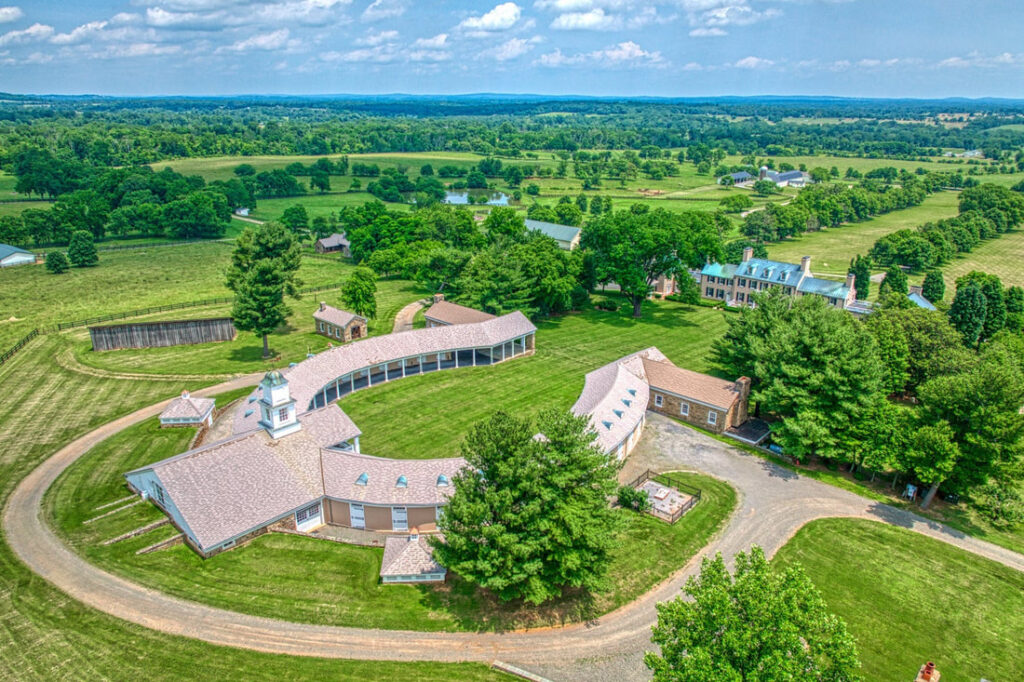
Llangollen Today
Today, Llangollen is back on the market and Leonard-Morgan is the listing agent.
When asked about his favorite part of the property Leonard-Morgan admits, “The patent house.” He adds, “So many have been destroyed. But this is not only restored; it’s enveloped into the whole property. It’s now a breakfast room and feels just lovely. It’s like a museum with intricate woodwork. It’s so rare to have such a large parcel with all this history, so close to D.C., and in such great shape.”
When asked how he would describe Llangollen in one word, Leonard-Morgan’s response was simple: Exquisite. Llangollen’s 18th-century roots, coupled with its restorations, stands as a testament to one of Virginia’s finest estates. With all this history — and a conservation easement that protects the land in perpetuity — its value goes well beyond its monetary worth. ML
This article first appeared in the January 2023 issue.


